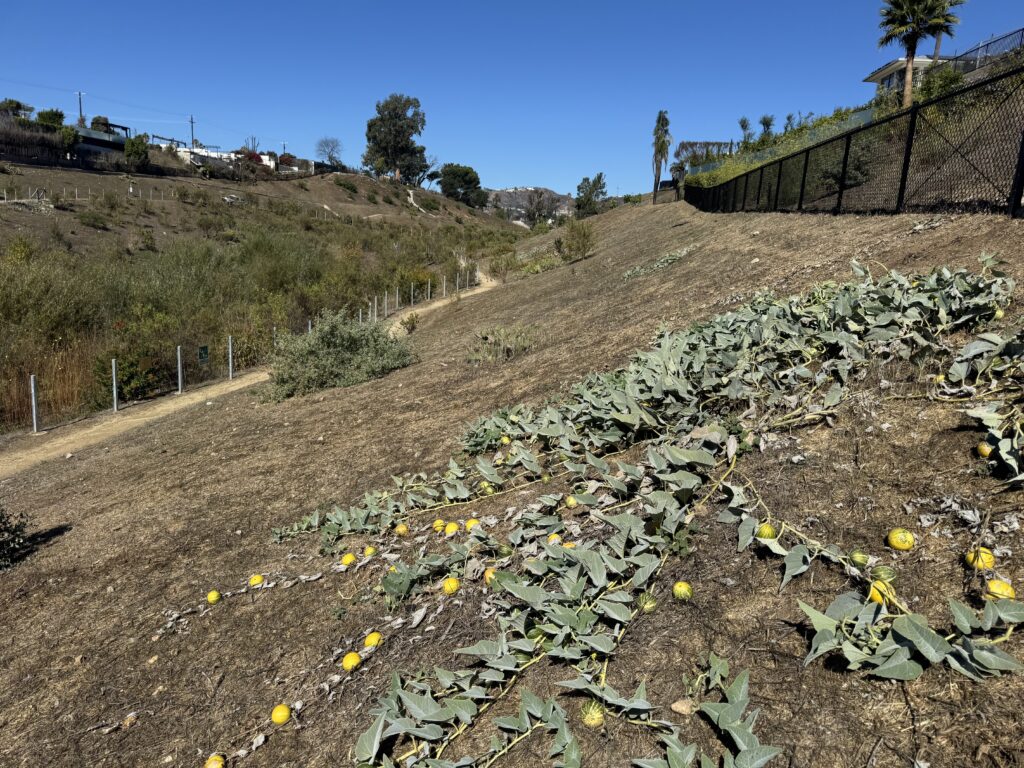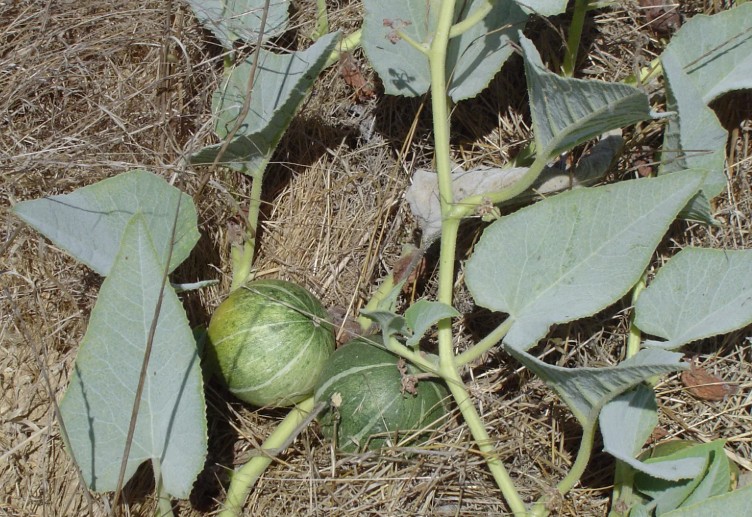
Buffalo gourd grows in several locations in George Wolfberg Park in Potrero Canyon.
After hearing reports that the fence at George Wolfberg Park was being replaced, CTN took a walk in Potrero Canyon yesterday to check it out.
Yes, the black wire fence that surrounded the canyon was torn down and replaced with a black wire fence – same height, same location. When a worker was asked why the fence was being replaced, he said, “It was burned.” But the old and new fences were indistinguishable. Both were still made of black wire.
But one of the really exciting finds was the buffalo gourd. Its scientific name is Cucurbita foetidissima, and the plant grows wild in the central and southwestern United States, including Arizona, Arkansas, Southern California, Colorado, Kansas, Missouri, New México, Oklahoma, Texas, and northern Mexico. Foetidissima means highly unpleasant smell.
Also called stinking squash, Missouri squash, wild squash, and coyote squash, squash requires little water, is drought tolerant, and is a perennial plant.
According to Texas Beyond History, “Both the root and fruit/seed of buffalo gourd were used by indigenous North Americans.” They valued the root for its medicinal properties and the seeds as a food source.
“The fruits and roots contain cucurbitacins, a group of triterpenoid glycosides that impart a very bitter taste and can be toxic in high concentrations. Cucurbitacins are produced by all members of the pumpkin family, but are greatly reduced in domesticated pumpkins and cucumbers. However, buffalo gourd is rich in cucurbitacin and the Eating this plant requires some processing.”
The gourd is called the pumpkin's cousin, and Native Americans used tea made from the powdered roots to speed labor, and the roots were used to induce vomiting and as a laxative.
Jennifer Mikalovic writes in “Plant Spotlight: Buffalo Gourd, A Native Plant to Celebrate this Fall” (click here) that “seeds and flowers were ground into powder to reduce swelling, and pureed plants were applied as poultices to treat skin conditions such as wounds. Buffalo gourds also had decorative uses; the dried ones Pumpkins were often painted for decorative purposes. The tuberous root of the plant was used to make soap, and while the young plants were used.” Squashes were edible and were prepared similarly to pumpkins, but the ripe fruits were not.”
George Wolfberg Park is located below the Palisades Rec Center 851 Alma Real and the trails are open to the public.

Buffalo squash has heart-shaped, triangular leaves and can be seen in Potrero Canyon.